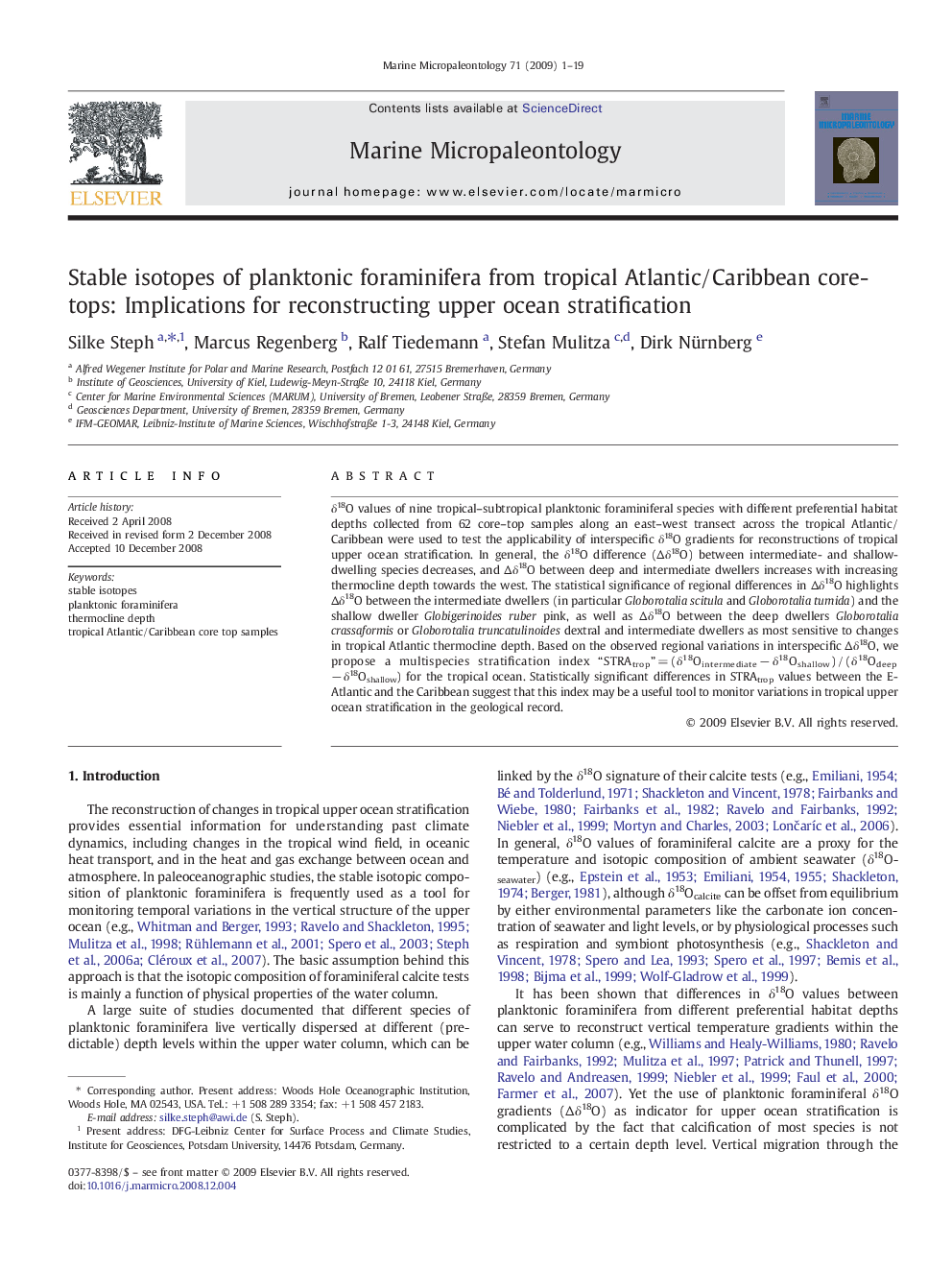| Article ID | Journal | Published Year | Pages | File Type |
|---|---|---|---|---|
| 4749317 | Marine Micropaleontology | 2009 | 19 Pages |
δ18O values of nine tropical–subtropical planktonic foraminiferal species with different preferential habitat depths collected from 62 core–top samples along an east–west transect across the tropical Atlantic/Caribbean were used to test the applicability of interspecific δ18O gradients for reconstructions of tropical upper ocean stratification. In general, the δ18O difference (Δδ18O) between intermediate- and shallow-dwelling species decreases, and Δδ18O between deep and intermediate dwellers increases with increasing thermocline depth towards the west. The statistical significance of regional differences in Δδ18O highlights Δδ18O between the intermediate dwellers (in particular Globorotalia scitula and Globorotalia tumida) and the shallow dweller Globigerinoides ruber pink, as well as Δδ18O between the deep dwellers Globorotalia crassaformis or Globorotalia truncatulinoides dextral and intermediate dwellers as most sensitive to changes in tropical Atlantic thermocline depth. Based on the observed regional variations in interspecific Δδ18O, we propose a multispecies stratification index “STRAtrop” = (δ18Ointermediate − δ18Oshallow) / (δ18Odeep − δ18Oshallow) for the tropical ocean. Statistically significant differences in STRAtrop values between the E-Atlantic and the Caribbean suggest that this index may be a useful tool to monitor variations in tropical upper ocean stratification in the geological record.
